Science is about more than just memorizing equations and using formula sheets. It’s a way of exploring and discovering things about the world around us. It can be learned by anyone, anywhere – and it can teach you a lot about style.
Over the next few months, I’m going to be explaining how science can apply to your wardrobe and showing you the places in which fashion and science intersect. (It’s more places than you think!)
In honor of Earth Day, we’re taking a three-part detour into ecology, the study of the interactions between living things and their environment. This is the second article in this mini-series: last time, we talked about the rainforest.
Today’s topic is the desert: so I’ll talk about some of the interesting things about desert ecosystems and the organisms that inhabit them, and then give you some sustainably-sourced outfits based on what we learned. Sound interesting? Keep reading!
Table of Contents
Abstract:
The desert is another of the world’s most unusual places. Deserts cover about a fifth of the planet’s surface, and occur wherever there is very little rainfall each year. Because of this, they are some of the harshest environments that exist on the planet – and so are home to some of the toughest species.
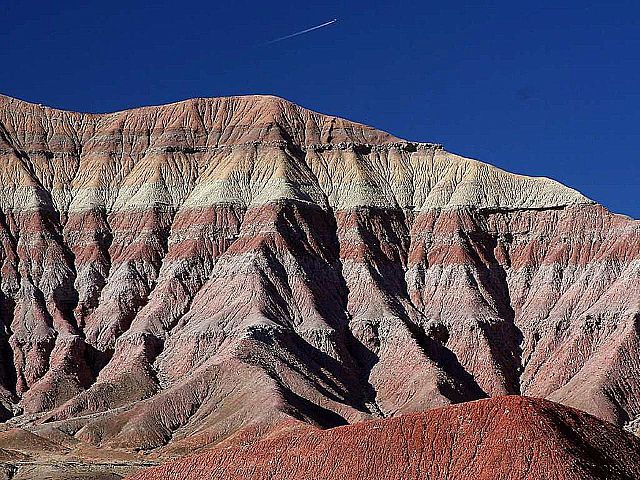
The dry air of deserts is often accompanied by direct sunlight and strong wind. These factors shape the soil of deserts, so that it is coarse, rocky, or sandy, making it more difficult for many plants to grow. The bare rock that is visible in many deserts is a stunning display of the effects of wind and time, without plant roots to hold dirt to surfaces.
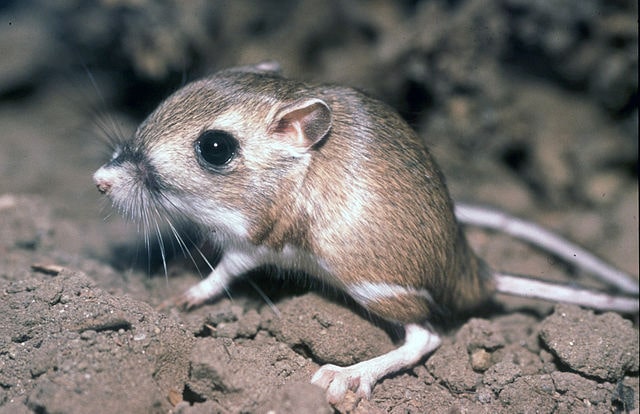
Desert air is, by nature, very dry. This causes desert surfaces to be exposed to almost twice as much solar radiation than other ecosystems – making them become extremely hot during the day, and then extremely cold at night. Many animals, such as the kangaroo rat, therefore avoid the scorching heat by only venturing out of their homes at night.
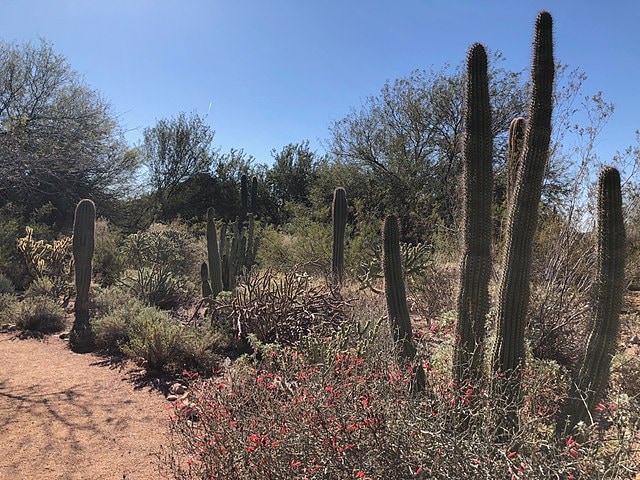
The coarse soil, dry air, and strong sun are especially harsh on desert plants, which have to evolve not only to store water, but to secure that water against hot sun, dry air, and thirsty animals. These factors are part of what brought about the desert’s most famous inhabitant – the cactus. These plants are found in hot deserts, where they have lost their leaves to prevent water loss from the heat, and have spines to protect them against herbivores and dry winds alike; their wide stems have a waxy coating to prevent water loss through their skin.
Methods:
The desert is an amazing biome because of its dramatic changes and extreme adversity – so channeling the desert in your look is all about making a big impact with just a few pieces – while still being comfortable in hot days and chilly nights.
The clothes featured in this article are a little bit more expensive than the items we usually feature on CF because they all come from ethical companies that embrace sustainable practices as a large part of their business. Next time you’re looking for an investment piece, look into the clothes by these companies, as they’re likely to be high-quality and designed to be long-lasting. (See Why You Should Spend More on Quality Clothing for more on this.)
Other ways to be sustainable are by wearing things you already own and love, giving your unwanted things to others (and vice versa), and buying things secondhand: these are all affordable ways to make a difference!
Figure 1: Sun and Stone
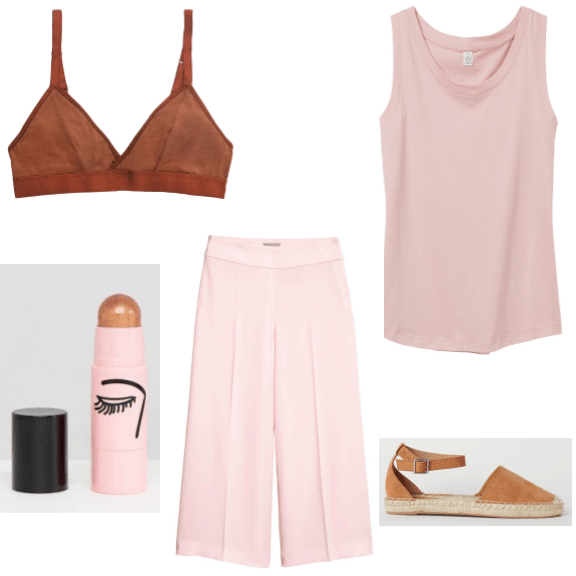
Products: Bralette – Alternative Apparel, Tank – Alternative Apparel, Highlight – ASOS, Pants – H&M, Espadrilles – H&M
One of the most striking features of the desert is the very landscape – without plants’ roots, it is easy to see the colors of the underlying soil – and the shapes that are revealed after millennia of erosion.
Channel the unusual shapes and bright colors of the desert dunes with a monochrome pink tank and flowy pants. Layer on a camel-toned bralette and espadrilles for more depth; sweep on a bronze-toned highlight stick to catch the sunlight. This outfit is not only eye-catching, but also breezy and comfortable – perfect for a sunny summer day.
Figure 2: Life at Night
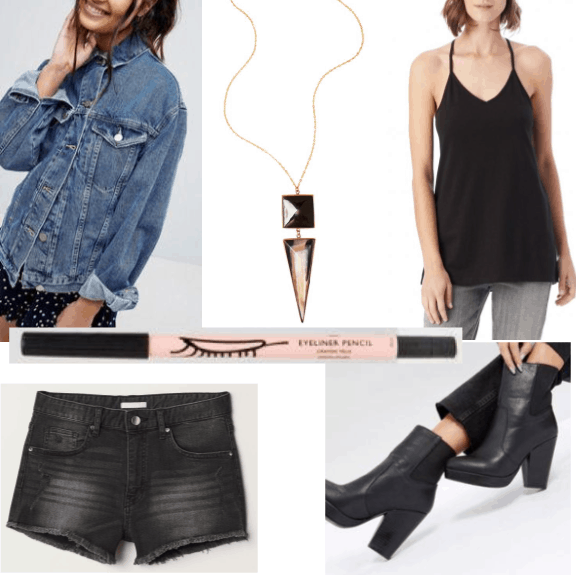
Products: Jacket – ASOS, Necklace – Fair Trade Winds, Tank – Alternative Apparel, Eyeliner – ASOS, Shorts – H&M, Boots – ASOS
Desert creatures avoid hot temperatures by only going out at night. You don’t have to avoid going out in the day, but you can go out for an evening looking super cool (while still being kind to the Earth), with this outfit.
A strappy black tank top and distressed grey shorts are easy evening staples – add on a pair of chunky heeled boots for a leg-lengthening but totally comfortable boost. A denim jacket keeps you from getting too cold on a chilly night, while a spiky necklace and smoky black eyeliner add edge. Whether your summer night out is for dinner, dancing, or something else altogether, this outfit will keep you in style.
Figure 3: From Roots to Spines
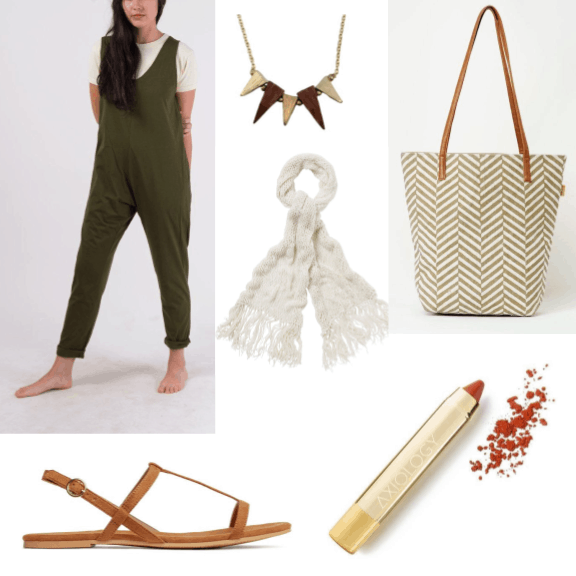
Products: Jumpsuit – Vege Threads, Necklace – Fair Trade Winds, Tote – Fair Trade Winds, Shawl – People Tree, Sandals – H&M, Lip Crayon – Axiology
Cacti are some of the most unusually evolved plants on the planet – you can tell just from a glance. Channel the cactus’s unique practicality with this easy summer outfit: throw on a green knit jumpsuit for a graphic touch, then add a pointy necklace and a knit wrap to mimic the spikes (without being spiny). A bucket tote is an easy way to carry around whatever you might need – including lots of water – while strappy sandals and a bright red lipstick add a summery touch.
Wearing a one-piece like this is a really easy way to get dressed in the morning – you only have to worry about one piece – but adding interesting neutral accessories keep it from looking too laid-back.
Results:
What ecosystems do you find most interesting? What are your best tips for keeping a sustainable wardrobe? Let us know in the comments below!

Hi! I really love the idea of this series and I think your outfits are really interesting. But I’m troubled by your inclusion of H&M and ASOS, two huge fast fashion brands that are absolutely *not* ethical. H&M especially makes a big fuss about being sustainable on the surface level, but it’s all strategy and very little action. I would really encourage you to read more about how these big fast fashion brands produce millions of garments full of toxic chemicals that eventually end up in landfills. There is nothing sustainable about the overproduction and overconsumption that these brands encourage. Again, I absolutely love this idea, but this is a really good opportunity to promote smaller brands that truly do right by the Earth– not fast fashion brands that use the illusion of sustainability as a marketing move.